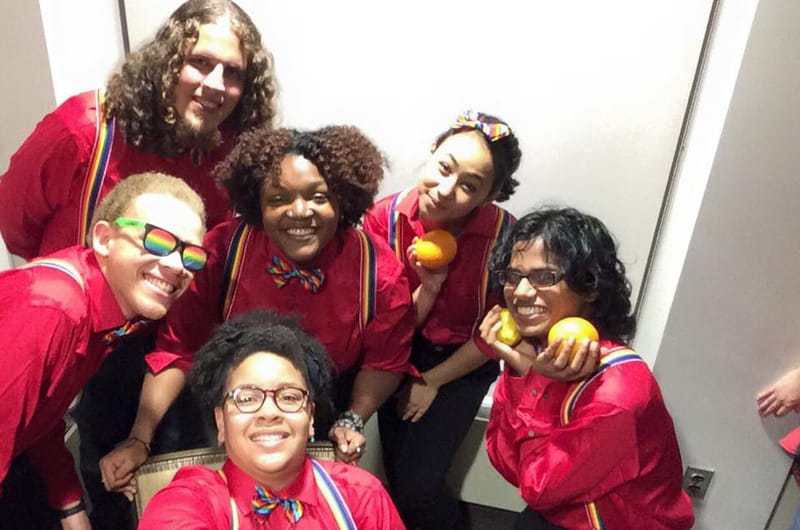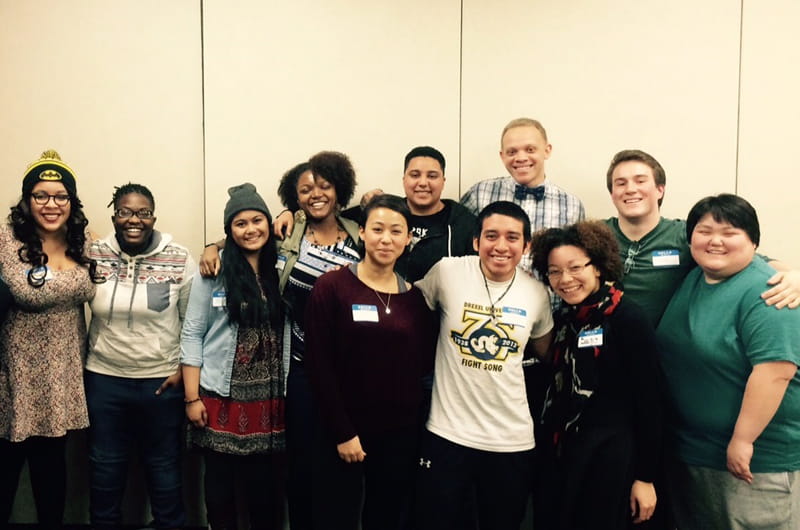Drexel’s Queer People of Color Student Group Going Strong
 By Frank Otto
By Frank Otto
Intersectionality is a term used to describe how a person’s gender, race, ethnicity, sexual orientation and class stack together and can complicate their overarching identity.
“Intersectionality is about having one identity and then having other identities that make that initial identity more difficult,” said Chantanae Singletary, a 2014 Drexel sociology graduate currently working as a staff member in the University’s LGBTQA Student Center. “It varies from person to person. One person might value their race over their sexual orientation, things like that.”
Singletary’s study of and experiences with intersectionality led her to realize that there was a gap in Drexel’s diversity efforts when it came to students of color in the LGBTQ community.
“There are a lot of LGBTQ students of color on campus and I had some conversations with students about feeling a void that they had been dealing with,” Singletary told DrexelNow recently.

Those conversations eventually led to a now-thriving extracurricular group for students, the Queer People of Color.
Last fall, armed with the knowledge she gleaned from conversations with her fellow students, Singletary decided to go to Tatiana Diaz, the director of multicultural programing in Drexel’s Student Center for Inclusion and Culture. She told Diaz about an idea for a group that would talk about “sexual orientation, race and gender as they meet at an intersection.”
“She said, ‘Why don’t you start a QPOC?’ I said, ‘I don’t know what that is,’” Singletary recalled with a smile. “I didn’t realize that was what I was proposing to her.”
Queer People of Color (QPOC) groups already existed at Temple University and the University of Pennsylvania at the time and served as a place for LGBTQ students to get together and talk about the issues they face — almost exactly what Singletary proposed.
“Tatiana hired me to work for the Center for Inclusion and Culture and my sole job at the time was to create the QPOC,” Singletary said. “It was a one-woman show, at first. I got a few people onto an executive board and then we had to grow it from there.”
Although there were predecessors at Temple and Penn, there wasn’t exactly a guidebook for creating the new club. Recruiting was the first thing to figure out.
“Initially, that seemed like it was going to be a hard task because everyone is so scattered and there are no indicators aside from being a person of color,” Singletary said. “So you have to find a way to comfortably reach out to other students.”
Singletary decided to have an information session for students to attend.
“Virtually no one showed up. We had three people,” she laughed.
Discouraging as it was, it stirred something. The University officially recognized the club and word of mouth went around.
Twenty students came to the first official meeting after recognition. And, since then, between 13 and 20 students have attended each weekly meeting, with the group’s membership likely exceeding 20 because the scheduling hassles of being a student prevent everyone from gathering at once.

During meetings, topics run the gamut from feminism to religion to politics. It all centers around intersectionality, Singletary said, “a whole bunch of marginalized groups tossed into one category.”
“We’ve been going strong for two quarters and our membership is growing,” Singletary said proudly.
She credits Joseph Salomone, the University registrar, as an “amazing resource” for the group as its advisor. Since the group was approved late last year, it didn’t have an official budget, so she’s excited for the possibility of the next school year when they can work more closely with Temple and Penn’s organizations.
Additionally, the Queer People of Color has been working with groups like OUT Grads, an LGBTQ organization for Drexel graduate students, and Drexel’s FUSE, the Foundation for Undergraduate Sexual Equality, of which Singletary is also a member.
“The University has been great,” Singletary said. “Everyone loves us. We’ve been congratulated all the time by faculty members. President [John] Fry and Dean [of Students David] Ruth, they love the idea.”
As the group grows, Singletary said it is trying to figure out the best ways to reach all potential members across the University. They meet in the Creese Student Center to better reach out to commuter students and those who live off campus.
“It’s going to be a long process to reel everyone in,” Singletary said. “We want QPOC to grow authentically; we don’t want it to be forced. We want people to find this group and say, ‘Hey, this is something I’ve been missing out on and I want to be a part of it.’”
Drexel News is produced by
University Marketing and Communications.
